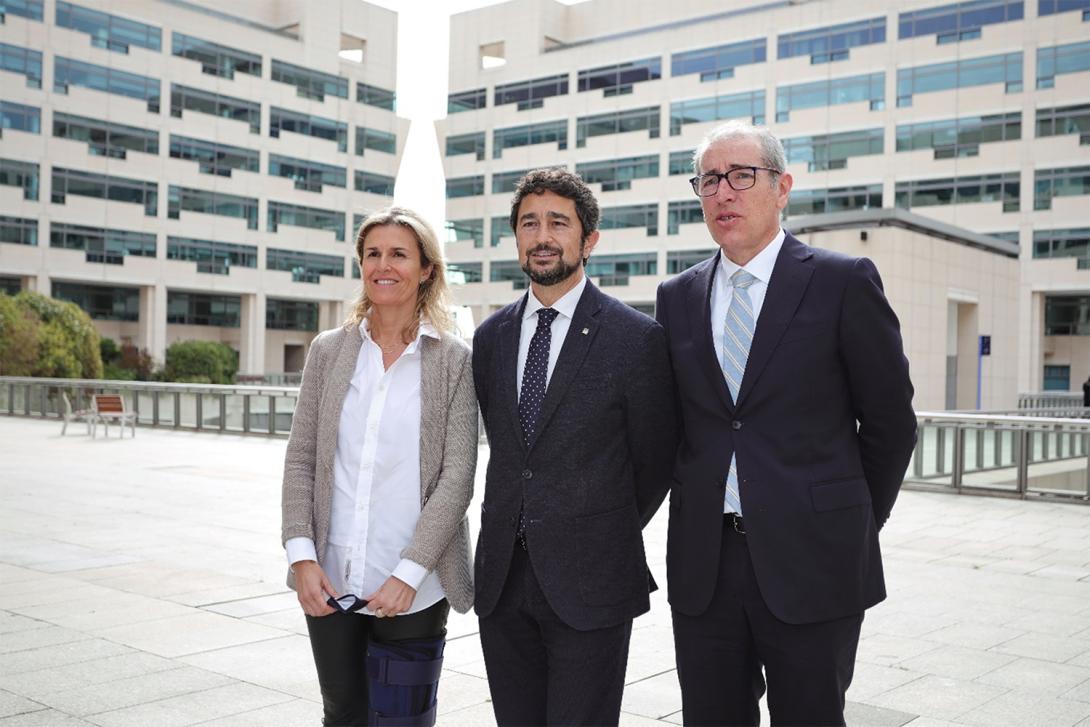Damià Calvet: "The Port of Barcelona closes 2021 with a cash flow of €83M, which allows us to continue developing our strategic agenda"
The Port of Barcelona closed 2021 with a turnover of €151 million, a 9% increase relative to 2020.
In 2021 records were broken in container traffic, with 3.5 million TEUs and 19.3% growth.

The Port of Barcelona closed 2021 with a turnover of €151 million, up 9% year on year. This good news is in line with the increased flow of goods, although as Damià Calvet, President of the Port of Barcelona, explained this morning, "the upturn in traffic outpaces the jump in turnover because the latter includes the Port of Barcelona's economic aid package to promote economic recovery and mitigate the effects of the pandemic".
The Recovery Plan, which was launched in 2021 and remains in force this year, resulted in Port of Barcelona operators saving nearly €11 million – money which the Port Authority ceased to collect. This support for business activity, which translates into benefits for society as a whole, makes the Port of Barcelona "a major player in the accelerated recovery of the economy and employment from pandemic fallout", said the President.
Calvet added that "the Port of Barcelona closes 2021 with a cash flow of €83M, which allows us to continue developing our strategic agenda and create the necessary conditions for economic growth". Operating cash flow rose 25% compared to 2020, marking a return to normal levels and serving as a sign of the Port's financial strength and investment potential.
At the presentation of results of financial year 2021, Miriam Alaminos, Deputy Director-General of Economic and Financial Affairs, highlighted investments of €69M. One of the largest investments was for the acquisition of land in the ZAL Port belonging to TOTAL Petrochemicals, which will now be incorporated into the port domain.
Traffic results
In terms of traffic, the year was satisfactory considering that total traffic at the Port swelled to 66.4 million tonnes. This figure is significant because it not only represents a year-on-year increase of 11.8%, but also because, as President Calvet explained, "we are just 1.5% below total traffic in pre-pandemic 2019, when we beat our all-time record". The feat was possible because, with the exception of liquid bulk, all the main types of traffic ended the year in positive territory.
2021 was a record-breaking year for container traffic, which totalled 3.5 million TEUs and saw growth of 19.3%. The uptick compared to 2019 –6.2%– is also positive. José Alberto Carbonell, General Manager of the Port of Barcelona, stressed that "relative to 2019, full container traffic climbed 9%, with gains in both exports and imports (10% and 5%, respectively) and goods in transit, which were up 14%". This strong showing means that "once again we are setting records in total import and export container traffic and transits", Carbonell remarked.
"This was possible because more and more shipping companies are relying on the Port of Barcelona, not only to move exports and imports, but also for their transshipments, which translates into even greater customer diversification. The productivity of Port of Barcelona terminals and the high quality of stowage, linked to the strong network of services, enable us to be one of the leading alternatives for shipping companies", concludes the General Manager.
In 2021, conventional cargo, which mostly includes Ro-Ro traffic, jumped to 397,000 ITUs, up 14.3% from 2020. As for new vehicle traffic, one of the areas most affected by the current uncertainty and economic crisis stemming from the pandemic, 499,000 units were moved for growth of 3.9%.
In liquid bulk, movements in 2021 totalled 12.4 million tonnes, down 3.4%. At year's end, dry bulk movements had climbed to 4.5 million tonnes – 9.9% more than in 2020.
The Port of Barcelona's long-standing commitment to intermodality and environmental sustainability meant a significant increase in rail traffic. 2021 closed with 318,971 containers having entered or exited the port area by train, marking year-on-year growth of 18.4% and putting the market share of this mode of transport at a record-setting 15.5%. Given these figures, the Port of Barcelona's rail traffic represents an annual saving of 46,315 tonnes of CO2, equivalent to taking 197,928 trucks off the road.
In 2021 passenger traffic was among the segments most affected by the pandemic in the Port of Barcelona. On 13 March 2020, passenger traffic was banned. For cruise ships, the ban was not lifted until June 2021. Against this backdrop, the Port of Barcelona's passenger traffic in 2021 totalled nearly 1.5 million people, 74.7% more than in 2020. Nevertheless, it remains 67.6% below 2019 levels. Recovery for ferries has been faster, 34.4% below pre-pandemic traffic. Cruiser traffic is 83.4% below 2019 levels. However, the figure of 521,000 cruise passengers at the year end is satisfactory and suggests that recovery will continue this year.
More dynamic markets
During financial year 2021 and in terms of containerised exports, the countries that were the most dynamic in their exchanges with the Port of Barcelona were: China, the United States, the United Arab Emirates, Algeria and Saudi Arabia. As for imports, the main origin markets for goods arriving at the Port of Barcelona were: China, Turkey, India, the United States and South Korea, in that order.
The complete presentation of the Port of Barcelona 2021 results is available at the following link:
https://www.portdebarcelona.cat/Resultados2021



